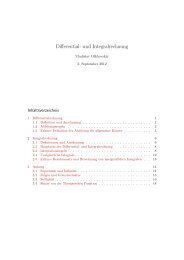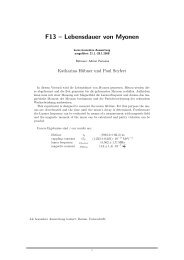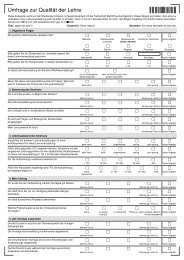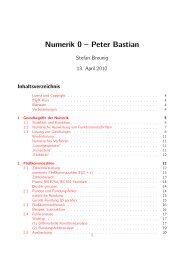Extrasolar Moons as Gravitational Microlenses Christine Liebig
Extrasolar Moons as Gravitational Microlenses Christine Liebig
Extrasolar Moons as Gravitational Microlenses Christine Liebig
You also want an ePaper? Increase the reach of your titles
YUMPU automatically turns print PDFs into web optimized ePapers that Google loves.
CHAPTER 4. CHOICE OF SCENARIOS 35<br />
(a) dP S = 1.1 θE (b) dP S = 1.2 θE (c) dP S = 1.3 θE<br />
Figure 4.5: The caustic shape varies with the angular separation of star and planet<br />
dP S. From left to right, the images illustrate the gradual change in topology from<br />
a (highly <strong>as</strong>ymmetric) central caustic to a smaller central caustic and a diamond<br />
shaped planetary caustic. qP S is equal to 10 −3 .<br />
4.1.4 Angular separation of moon and planet<br />
As the moon by definition orbits the planet, there is an upper limit to the distance<br />
between the two bodies. It must not exceed the distance between the planet and its<br />
inner Lagrange point. We recall that in the gravitational potential formed by the<br />
m<strong>as</strong>ses of star and planet, the inner Lagrange point is the saddle point between the<br />
two bodies (see figure 4.6). The distance between the centre of the planet and the<br />
inner Lagrange point is called Hill radius and is calculated <strong>as</strong><br />
rHill = aP S<br />
MP<br />
3MS<br />
for circular orbits, with aP S <strong>as</strong> the semi-major axis of the planetary orbit. This can<br />
be translated to “lensing parameters”, but the nature of the equation changes into<br />
an inequality, because the semi-major axis aP S cannot be directly inferred from the<br />
projected angular separation dP S that we can me<strong>as</strong>ure in a caustic model. Therefore,<br />
we need to make <strong>as</strong>sumptions for the position in orbit at which we are seeing the<br />
planet. Fortunately, the angular separation at le<strong>as</strong>t gives us information about the<br />
minimal orbital radius of the planet. The projected distance in the lens plane cannot<br />
be larger than the physical distance. Thus we get<br />
rHill = aP S<br />
<br />
1<br />
3 qP<br />
1<br />
3<br />
S<br />
1<br />
3<br />
with aP S ≥ dP SDL<br />
(4.1)<br />
and the Hill radius is not a strict constraint anymore.<br />
Bodies in prograde motion with an orbit below 0.5 rHill can have long term stability.<br />
For retrograde motion, the limit is somewhat higher at 0.75 rHill. For these<br />
numbers, we refer to Domingos et al. (2006) and references therein, particularly<br />
Hunter (1967).










